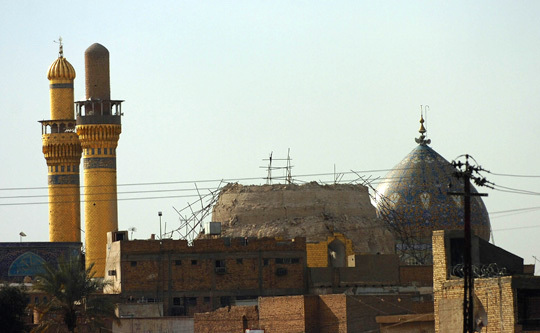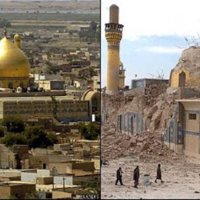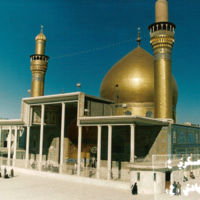- America’s War in Iraq (2003-2005)
- This Strategy is Not Working (January-June 2006)
- Together Forward? (June-August 2006)
- Silos and Stovepipes (September-October 2006)
- Setting the Stage (Early November 2006)
- A Sweeping Internal Review (Mid-Late November 2006)
- Choosing to Surge (December 2006)
- What Kind of Surge (Decemner 2006 - January 2007)
- About
- Contact Us
- Browse Collections
- Browse Exhibits
- Neatline
The Bombing of the Golden Mosque
[Insert Description of the mosque, its location, its history and meaning in the world of Islam]
[Below is from the introdution to Chapter 2 in Surge Book]
Tragically, even as American officials slowly realized their need for new strategies for Iraq, the country’s religious and ethnic violence deepened still more, as the insurgency—as most were now comfortable calling it—threatened to expand into a widespread civil war. Zealots on the ground welcomed the renewed bloodshed, eager for their own religious or ideological reasons to see the country further rent by war, and Americans further bloodied as well. Abu Musab al-Zarqawi, a key Sunni militant, orchestrated the destruction of a Samarra’s Golden Dome Mosque, a pilgrimage site of tremendous historic and religious significance for Shias Muslims. Violence surged in response, leading one American policymaker to the difficult conclusion that no matter what optimists might offer, “the current approach wasn’t working, and we needed a fresh look.”
In his interview, David Satterfield claims the bombing of the mosque was a major turning point in the war in Iraq: "That explosion was the most dramatic demonstration of what intelligence had been suggesting for some time before, which was that the leader of AQIM [Al-Qaeda in the Islamic Maghreb] was intent on provoking Sunni-Shia civil war in Iraq."





